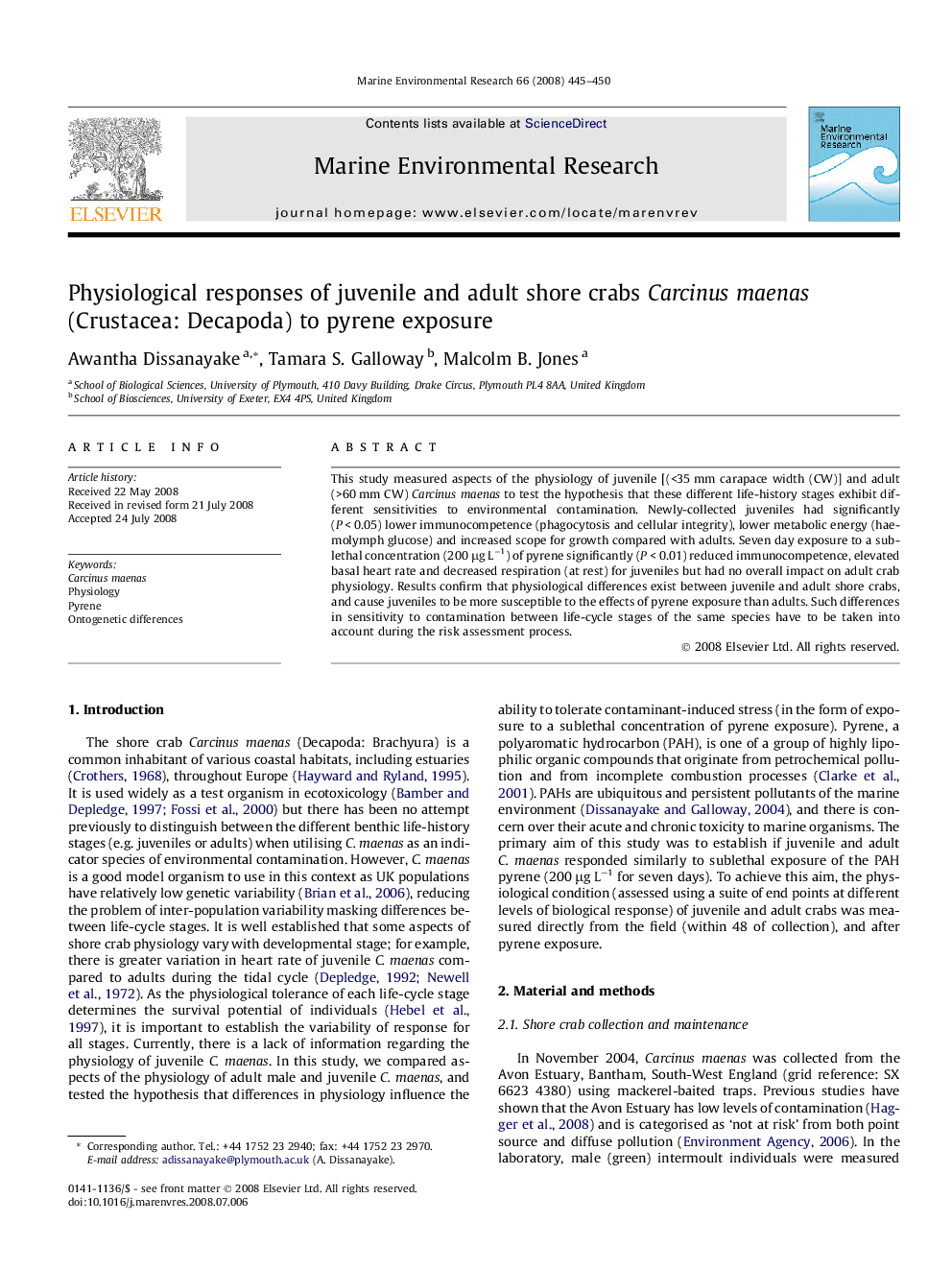| Article ID | Journal | Published Year | Pages | File Type |
|---|---|---|---|---|
| 4551513 | Marine Environmental Research | 2008 | 6 Pages |
Abstract
This study measured aspects of the physiology of juvenile [(<35 mm carapace width (CW)] and adult (>60 mm CW) Carcinus maenas to test the hypothesis that these different life-history stages exhibit different sensitivities to environmental contamination. Newly-collected juveniles had significantly (P < 0.05) lower immunocompetence (phagocytosis and cellular integrity), lower metabolic energy (haemolymph glucose) and increased scope for growth compared with adults. Seven day exposure to a sub-lethal concentration (200 μg Lâ1) of pyrene significantly (P < 0.01) reduced immunocompetence, elevated basal heart rate and decreased respiration (at rest) for juveniles but had no overall impact on adult crab physiology. Results confirm that physiological differences exist between juvenile and adult shore crabs, and cause juveniles to be more susceptible to the effects of pyrene exposure than adults. Such differences in sensitivity to contamination between life-cycle stages of the same species have to be taken into account during the risk assessment process.
Keywords
Related Topics
Physical Sciences and Engineering
Earth and Planetary Sciences
Oceanography
Authors
Awantha Dissanayake, Tamara S. Galloway, Malcolm B. Jones,
